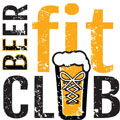
Intermittent fasting is quickly becoming a buzzworthy trend in 2020. I’ve been asked about this by friends, co-workers and even discussed this on a podcast with Sophia. Whether you’ve only heard of it, tried it or are an aficionado, I’ve decided to delve into this lifestyle trend and share my feedback in my no nonsense kind of way.
First thing first, what exactly is intermittent fasting? In the most basic terms, it’s exactly what you think it is: alternating periods of fasting and eating. However, the hidden and beneficial secret is all in the timing. Intermittent fasting taps into your internal clock, aka circadian rhythm, to make the most of what you consume. There are three versions of intermittent fasting that have been researched, and probably the ones you’ve heard your fellow Beerfit talking about, so let’s get into those.
Alternate Day Fasting
One day on, one day off. During ‘off’ days you fast, but you can have water, tea or black coffee. When it’s ‘on’, it’s ON! You can eat whatever you fancy, but for obvious reasons, you should eat with health in mind. Most research on this version focused on a calorie restricted diet in obese participants, which did show some improvements in weight and health markers.
If you came to me as a healthy person looking to try this, I would suggest eating plenty of fruits, vegetables, whole grains and healthy fats. Whole grains will keep you feeling full. Remember the color rule, too. Darker hued foods are full of antioxidants. You can eat fat as well, contrary to the old-school opinion. The type of fat matters, though. Avocado, olive oil and salmon are some examples.
There are some drawbacks to this, though. If you dive right into this, expect some real hunger pangs on your ‘off’ days. You may also feel out of it and have difficulty concentrating. For the average person, feeling like their stomach is eating itself and their brain cannot compute a damn thing are key factors in the sustainability of this lifestyle.
Modified Fasting
This is a variation on Alternate Day Fasting. Have you heard of 5:2 around the gym or the water cooler? Now you can be informed in the group! Simply put, 5 ‘on’ days, 2 ‘off’. A more forgiving version of this will allow calories on ‘off’ days. Some professionals recommend 20-25% of your recommended intake, which is 400-600 calories, depnding upon your age, sex and activity level. Another version limits ‘off’ day intake to 500 calories per day across the board. Most people start with this version as an introduction and eventually work up to Alternate Day Fasting, or use it to keep their current weight in check.
Yes, this version allows for food consumption (yay!), but those calories matter. Empty calories will completely undo your efforts, not to mention make you feel pretty crappy. Save that beer for your ‘on’ day. Since we’re on the topic of saving things for ‘on’ days, unless you’re a professional faster, try not to do high intensity workouts on an ‘off’ day.
Time-Restricted Fasting
Just as the name mentions, time is everything with this method. Fasting takes place 8-12 hours a day, with the most extreme at 16 hours. If you’re a night owl or an early bird, this can be difficult. For me, it’s rare to not eat within an hour of waking. I would be a hangry lunatic on this, I cannot lie. However, you can easily adjust the hours you fast, which is a bonus with this method.
This works most with your circadian rhythm, as I mentioned. Interesting research has emerged, pioneered by Dr. Panda and his team at the Salk Institute for Biological Sciences, showing that challenging your circadian rhythm has a host of benefits, especially since it weakens as we age. I happened to be fortunate enough to meet him and discuss his research. He’s made it his life’s work and has even tried his own method, which makes him fantastic in my book. My own philosophy of “don’t recommend it if you haven’t done it” certainly applies here. I just may try this one, hangry and all!
Intermittent Fasting probably sounded intimidating to you at one point, but hopefully I’ve demystified it enough for you to try it or just feel more informed when it comes to health and wellness.
If you’re interested in reading more about the research, here are a few of the studies I perused:
Sundfør T.M., et al. Effect of intermittent versus continuous energy restriction on weight loss, maintenance and cardiometabolic risk: A randomized 1-year trial. Nutr Metab Cardiovasc Dis. 2018 Jul;28(7):698-706.
Clayton D.J., et al. Effect of 24-h severe energy restriction on appetite regulation and ad libitum energy intake in lean men and women. Am J Clin Nutr. 2016 Dec;104(6):1545-1553.
Moro T., et al. Effects of eight weeks of time-restricted feeding (16/8) on basal metabolism, maximal strength, body composition, inflammation, and cardiovascular risk factors in resistance-trained males. J Transl Med. 2016 Oct 13;14(1):290.
Klempel M.C., et al. Intermittent fasting combined with calorie restriction is effective for weight loss and cardio-protection in obese women. Nutr J. 2012 Nov 21;11:98.
Wilkinson M.J., et al. Ten-Hour Time-Restricted Eating Reduces Weight, Blood Pressure, and Atherogenic Lipids in Patients with Metabolic Syndrome. Cell Metab. 2020 Jan 7;31(1):92-104.e5.
Heilbronn L.K., et al. Alternate-Day Fasting Gets a Safe Bill of Health. Cell Metab. 2019 Sep 3;30(3):411-413.



